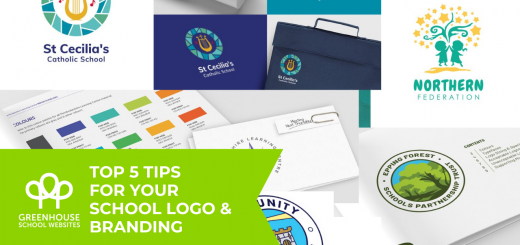School Accessibility compliance – what does it all mean?
There’s been a bit of scaremongering about school website accessibility recently. So, in the spirit of usability, we will keep this simple with a TL;DR (too long; didn’t read) version, followed by further detail for those who want it.
But firstly we want to put your mind at ease and say that you should not need to spend more money to become compliant, so long as you follow the guidance below for your school website.
The quick answer to “Does my school need to become fully compliant or are we exempt?” is:
Schools are partially exempt
Yes, schools are exempt from the Public Sector Bodies (Websites) Accessibility Regulations 2018 – but with two key caveats:
- Essential Content:
If your website has forms that people need to use (like picking school meal preferences), they should meet WCAG AA standards. Beyond forms? It’s open to debate. - An Accessibility Statement:
Schools must have one, but the government’s template is over-complicated. We have a version of this template, customised according to the features and specific configuration of schools with a Greenhouse website. Simply adapt and add your accessibility statement to your school website and you will be compliant without spending lots of money! Not a Greenhouse customer? Read to the end for some tips on what to include in your own accessibility statement relevant to your school website.
Of course the above only covers the minimum requirement for schools, but we all know that greater accessibility is an aim we would all love to achieve, and we can always do more. So for the longer answer, including some top tips for making your website more user-friendly and accessible for all, please continue reading – especially for our top tip on a quick and free accessibility widget you can have added to your school website!
Why are the requirements so important?
Challenges for users with a disability or impairment
Many users with a disability or impairment face challenges when browsing websites including:
- low contrast, small fonts, poor screen reader support (visual impairments),
- missing captions or transcripts (hearing impairments),
- difficult navigation and small click targets (motor disabilities),
- cluttered layouts and unclear instructions (cognitive issues),
- reliance on colour alone (colour blindness),
- and flashing content (seizure risks).
Requirements
The UK Government published a guide to accessibility requirements for public sector bodies in 2018. Minor updates have been made since then. We endorse the recommendations. Whilst it’s good practice to follow the suggestions as far as possible, schools are partially exempt:
“The following organisations are partially exempt from the accessibility regulations: primary and secondary schools or nurseries – except for the content people need in order to use their services, for example a form that lets you outline school meal preferences. Partially exempt organisations would need to publish an accessibility statement on their website.”
Essential content
The guidelines require ‘essential’ content to be accessible, giving the example of “a form that lets you outline school meal preferences.” An interpretation of this would be where a user must complete an action or be able to access critical information for their child’s education. Other examples could include:
- Admissions and Enrolment Forms
- School Meal Preferences and Payments
- Absence Reporting
- Timetables and Term Dates
- Contact Information
- Special Educational Needs (SEN) Information
- Emergency Alerts
Quick win – the UserWay accessibility tool
UserWay offers a free accessibility widget as shown in the top right on our Holly Grange demo website. You can generate your own FREE widget at https://userway.org/get/ – you can specify the features to include, the icon style and position. When you have finished customising, send us the ’embed’ code and we will integrate it into the website for you without any extra charge to you as a current customer.
If, however, you are a Greenhouse customer and would prefer us to setup your UserWay account and generate the code for you, we would charge a one-off £75 to cover the work of this set up.
Meeting AA compliance
By default, our code adheres to AA accessibility standards. If you are not a Greenhouse customer currently you will need to check if your provider adheres to the same high standards. However, achieving full AA compliance can present three key challenges:
- Contrast
The site’s design may not provide sufficient contrast between background and foreground colors. While text on most pages typically meets the standard, issues can arise when brand colours—such as those used in a school’s header or footer—fail to provide adequate contrast. - Content
Accessibility depends on user-generated content. For example, images added without an ‘alt’ tag (which provides descriptions for screen readers) or links which say ‘click here’, or PDF documents might have been saved as images rather than text etc.
Please refer to the Recommendations for you section of our accessibility FAQ. - Third-Party Content
Embedded third-party content may not meet accessibility standards, which is outside our direct control.
Creating your Accessibility Statement
The website section of a school accessibility statement should explain how the school’s website is designed to be user-friendly and accessible for all visitors. It should include:
1. Compliance with accessibility standards – A statement confirming that the website follows accessibility guidelines, such as the Web Content Accessibility Guidelines (WCAG) at an appropriate level (e.g., WCAG 2.2 AA). (You will need to check with your website provider to ensure that these standards are met and be aware of any which are not currently being met.)
2. Examples of features that support accessibility – have a look at our UserWay recommendation above which can help with these too – such as:
- Keyboard Navigation – The website can be fully navigated using a keyboard (important for those who cannot use a mouse).
- Text alternatives – Images, charts, and other non-text content have descriptive alt text so screen readers can describe them.
- Readable text and contrast – Clear fonts, appropriate color contrast, and resizable text options to assist users with visual impairments.
- Captions and transcripts – Videos include subtitles or transcripts for those with hearing impairments.
- Adjustable content – Users can modify text size, contrast, or spacing without breaking the website’s layout.
3. Reporting accessibility issues – One way to offer accessibility for certain items – forms etc – could be to offer a variety of formats. Provide a contact method (email or phone) for users to report difficulties and request information in alternative formats to help visitors to your site let you know if they have any problems or have specific needs i.e. large print or translated copies in other languages.
4. Ongoing commitment to improvement – A statement that the school regularly reviews and updates the website for better accessibility based on user feedback and new guidelines. This ensures that all visitors, including those with disabilities, can use the website effectively.
What if our website is not fully accessible?
If your school’s website has areas that do not fully meet accessibility standards, the accessibility statement should:
1. Acknowledge the gaps – Clearly state which parts of the website may not yet be fully accessible. For example:
- “Some older PDF documents may not be fully accessible to screen reader users.”
- “Some videos may not yet have captions.”
- “Certain interactive elements may not be fully keyboard-navigable.”
2. Explain the reason – Although schools are partially exempt from some regulations, you should mention where possible the reasons why you cannot make all content accessible at this time:
- “Due to a disproportionate burden, we have not yet been able to make all historical documents fully accessible.”
- “Some third-party content, such as embedded maps or external links, may not meet accessibility standards, as we do not have control over them.”
3. Plan for improvement – Outline any steps being taken to address these issues, if possible:
- “We are working towards improving the accessibility of our PDFs and replacing key documents with accessible versions where feasible.”
- “We aim to add captions to all new video content moving forward.”
4. Alternative access options – Offer ways for users to request accessible versions of content:
- “If you need any information in a different format, such as an accessible PDF, large print, or audio recording, please contact [Name/Department] at [Email/Phone].”
This approach is honest, legally compliant, and shows a commitment to accessibility while recognising the school’s limitations.











